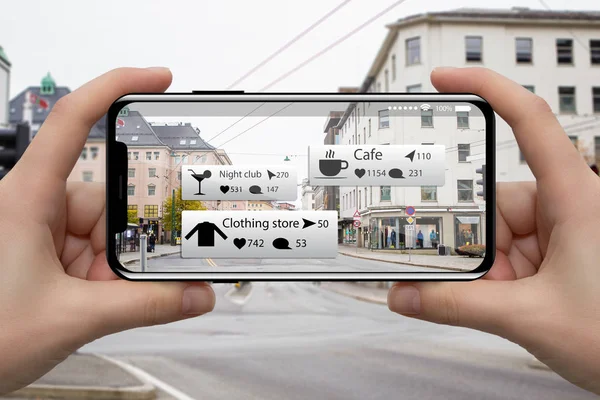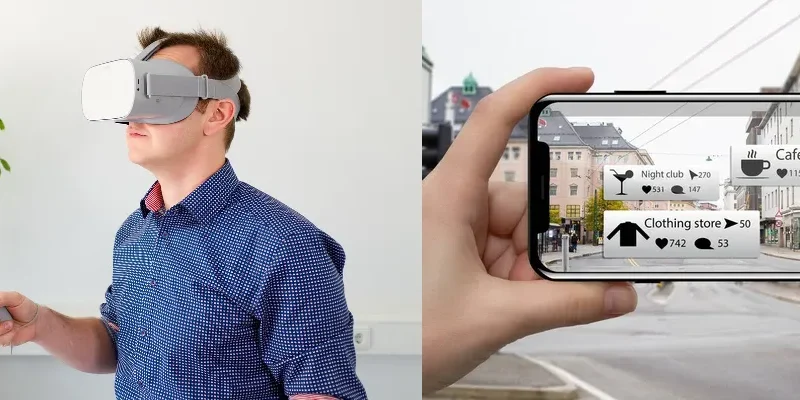Step into a New World: Virtual Reality(VR) and Augmented Reality(AR)
Virtual Reality (VR) and Augmented Reality (AR) have transformed the way we interact with technology and the world around us. These immersive technologies have taken us beyond the boundaries of our physical reality, opening up new possibilities and experiences. In this comprehensive guide, we will explore the fascinating realm of Virtual Reality(VR) and Augmented Reality(AR), delving into their origins, applications, and future prospects. So, put on your VR headset and join us as we step into a new world!

1. Introduction to VR and AR
Virtual Reality (VR) and Augmented Reality (AR) are immersive technologies that offer users experiences beyond the physical world. VR creates a completely digital environment, while AR overlays digital information onto the real world. Both technologies have gained immense popularity in recent years, revolutionizing various industries.
2. A Brief History of VR
The roots of VR can be traced back to the 1960s when Ivan Sutherland developed the first head-mounted display system. Since then, VR has come a long way, with major advancements in the gaming and entertainment industries.
3. The Evolution of AR
AR, on the other hand, has seen significant progress with the advent of smartphones and wearable devices. From Pokémon Go to Snapchat filters, AR has become a part of our daily lives.
4. How VR and AR Work
To understand how VR and AR work, it’s essential to know the technology behind them. VR relies on headsets that track your head movements and provide a 360-degree digital experience. AR uses cameras and sensors to overlay digital elements onto the real world.
5. Hardware and Devices
VR and AR require specific hardware, including headsets, controllers, and sensors. We’ll explore the leading devices in the market and their capabilities.
6. Applications in Gaming
Gaming has seen a revolution with VR. We’ll dive into some of the most popular VR games and discuss how they enhance the gaming experience.

7. Educational Applications
VR and AR are transforming education by providing immersive learning environments. We’ll explore how students can step into history, science, and art through these technologies.
8. VR and AR in Healthcare
From surgical simulations to mental health therapy, VR and AR have found their way into the healthcare sector. We’ll discuss their potential to improve patient care.
9. Architectural and Design Integration
Architects and designers are using VR to create virtual walkthroughs of buildings and prototypes. Discover how VR is reshaping the design and architecture industries.
10. Entertainment and Media
VR and AR are changing the way we consume entertainment. We’ll look at how these technologies are enhancing movie-watching and storytelling.
11. Business and Industrial Use Cases
Businesses are leveraging VR and AR for training, product development, and customer experiences. Explore the impact of these technologies on the corporate world.
12. Challenges and Limitations
While VR and AR offer incredible opportunities, they also face challenges like motion sickness and high costs. We’ll address these limitations and potential solutions.
13. Future of VR and AR
What lies ahead in the future for Virtual Reality (VR) and Augmented Reality (AR)? We’ll speculate on upcoming innovations and trends in the immersive technology space.
14. Creating Your Own VR and AR Content
Interested in developing your VR or AR content? We’ll provide insights into the tools and resources available for aspiring creators.
15. Conclusion
In conclusion, virtual reality and augmented reality are more than just buzzwords; they are transformative technologies with applications in various sectors. As they continue to evolve, we can expect even more exciting developments in the world of VR and AR.
16. FAQs
- What is the primary difference between VR and AR? VR creates a fully immersive digital environment, while AR overlays digital elements onto the real world.
- Are there affordable VR and AR devices for consumers? Yes, there are entry-level VR headsets and AR apps available for smartphones that make these experiences accessible.
- What are the key challenges in VR and AR adoption? Challenges include motion sickness, high costs of premium devices, and the need for more compelling content.
- Can VR and AR be used for professional training? Absolutely! Many industries use VR and AR for training purposes, such as medical simulations and industrial safety training.
- What can we expect from VR and AR in the next decade? We can anticipate advancements in hardware, more realistic experiences, and broader integration into our daily lives.
Step into the world of virtual and augmented reality, and you’ll discover a universe of endless possibilities. Whether you’re a gamer, student, or business professional, these technologies are shaping the way we perceive and interact with the digital world.




